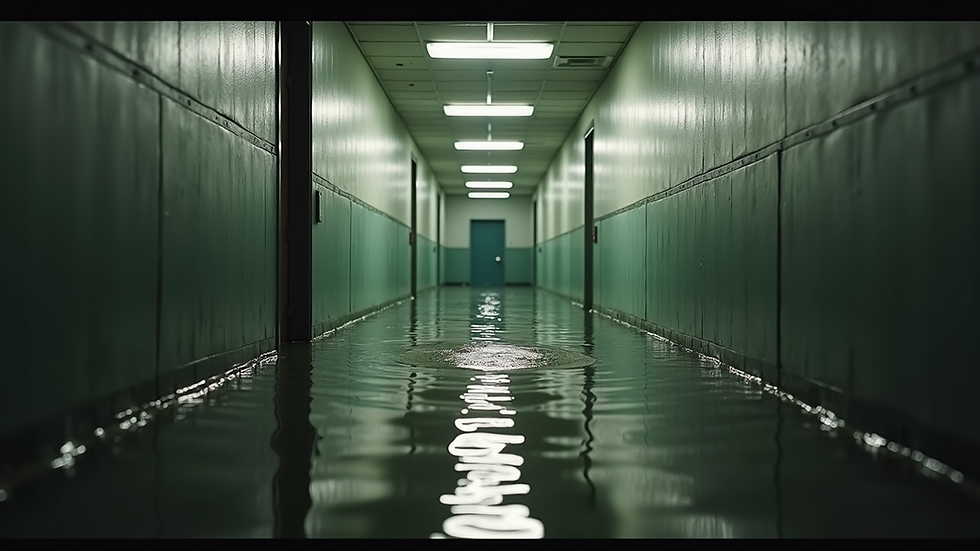Identifying Common Plumbing Leaks in Your Home
- Christian Yates

- Jun 10
- 4 min read
Plumbing leaks can lead to severe damage if left undetected. Identifying these leaks early not only saves money but also helps maintain the integrity of your home. In this guide, we will explore common plumbing leaks found in residential properties and how to detect them.
Understanding Leak Detection
Leak detection involves identifying the presence and location of leaks within a plumbing system. Homeowners should be aware of the typical signs of leaks, as these can range from subtle to obvious. The sooner you catch a leak, the better. For example, small leaks can easily escalate into significant issues if not addressed.

Be proactive in protecting your home by familiarizing yourself with what to look for. Whether it’s dripping faucets, wet spots on walls, or unusual water bills, these clues are vital for effective leak detection.
Identifying Common Leak Locations
Knowing where leaks often occur can help in your leak detection efforts. Here are some common areas to check:
1. Faucets and Fixtures
Faucets are one of the most common sources of leaks. A dripping faucet not only wastes water but can also signal a need for repair. The leak may originate from worn-out washers or seals, which can usually be replaced quickly and easily.

To check for leaks, observe your faucets for any signs of dripping when the water is off. You can use a paper towel to wipe around the base and the spout. If you notice moisture, it may indicate an issue.
2. Toilets
Toilets can be notorious for hidden leaks. A silent leak in your toilet can waste gallons of water daily without you even realizing it. To detect a leak, you can perform a simple test.
Add a few drops of food coloring into the toilet tank and wait for about 10 minutes. Check the bowl; if the color appears in the water, you have a leak that needs fixing.
3. Pipes and Water Supply Lines
Visible signs of leaks can often be found in your walls, ceilings, or basement. Look for bubbling paint, warping wood, or wet patches. These signs might indicate leaking pipes or supply lines.
If you suspect a pipe is leaking, you may also hear sounds of running water. Listen closely, as it can provide hints about where the leak is originating from.

4. Water Heaters
Water heaters are another common source of leaks. A leak can occur due to corrosion or a faulty valve. Regular inspections can help you identify these issues before they escalate. If you notice puddles around the base or unusual noises, it may be time to check your water heater.
5. External Leaks
Don’t forget to inspect your outdoor plumbing. Hose bibs and sprinkler systems can develop leaks that may go unnoticed. Additionally, look for pooling water in your yard, which can indicate a broken pipe.
The Importance of Monitoring Your Water Bill
Your water bill can be a crucial tool in leak detection. A sudden increase in your bill may signify a leak somewhere in your system. Keep track of your monthly consumption. If you notice a spike without a corresponding reason like a guest staying over, it’s time to investigate further.
Tips for Effective Leak Detection
1. Regular Inspections
Conduct regular checks of your plumbing system. Look under sinks, around toilets, and in your basement or crawl space. Early detection can prevent minor issues from turning into major problems.
2. Listen for Sounds
Auditory cues can also help in leak detection. Listen for sounds of dripping or running water when everything else is quiet. Sometimes leaks can be more easily detected through sound than sight.
3. Use a Moisture Meter
For those serious about leak detection, investing in a moisture meter can help. This device can measure moisture levels in walls and other surfaces, making it easier to identify potential problems.
4. Call in Professionals
If you're still unsure, don't hesitate to contact professionals. Companies like Liberty Leak Detectionhttp://Libertyleakdetection.com specialize in identifying hard-to-find leaks and can save you from future headaches.
DIY Solutions for Minor Leaks
For minor leaks, several DIY solutions can be applied. For example, replacing washers in faucets is usually straightforward. If the leak is coming from a toilet, often adjusting or replacing the flapper can resolve the issue.
Before you start any DIY repairs, ensure you have the necessary tools and know-how. If a repair seems beyond your ability, it’s wise to consult with a plumber.
When to Call a Plumber
Knowing when to call a professional plumber is essential. If you find leaks that you can’t address easily, or if your DIY efforts fail, it’s time to reach out for expert help. Other signs that a plumber should be called include:
Frequent unexplained increases in water bills
Mold or mildew growth around plumbing fixtures
Significant pooling or flooding in any part of your home
Taking prompt action can save you time, money, and a lot of frustration in the long run.
Final Thoughts on Plumbing Leak Awareness
Being aware of common plumbing leaks in your home can save you money and stress. Regular inspections, monitoring your water bill, and knowing when to call in professionals are key elements in effective leak detection.
With the right approach, you can maintain the health of your plumbing system and avoid more considerable issues down the line. Don’t underestimate the importance of addressing minor leaks quickly—I hope this guide has provided you with the tools you need for effective leak management!
By taking proactive steps and staying informed, you can protect your home and ensure your plumbing system functions smoothly for years to come.
_edited_edited_edited.png)



Comments